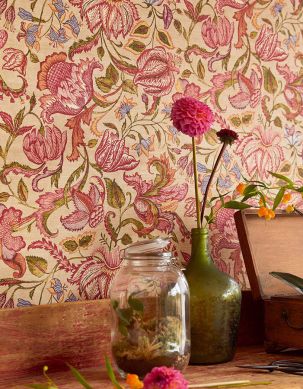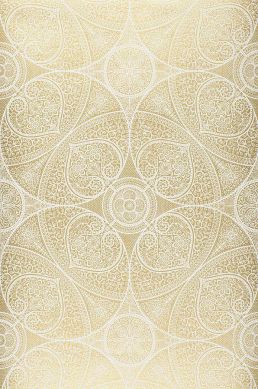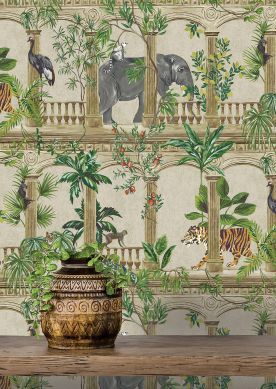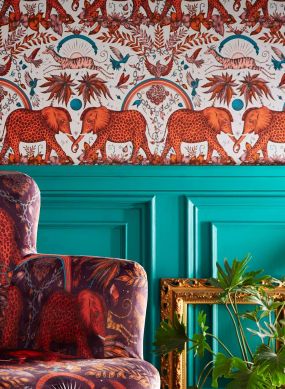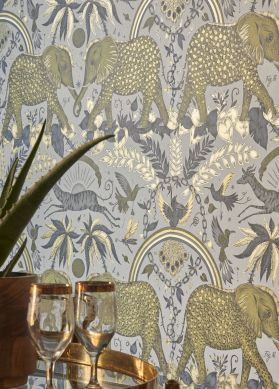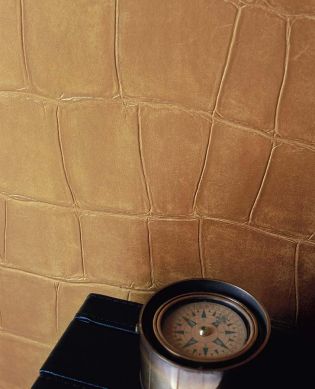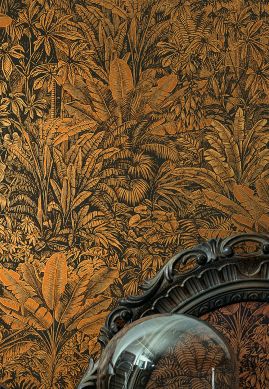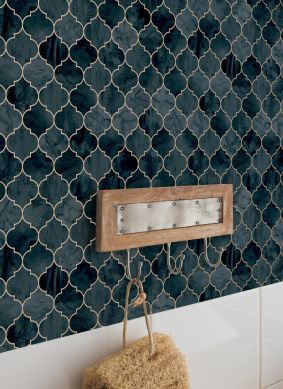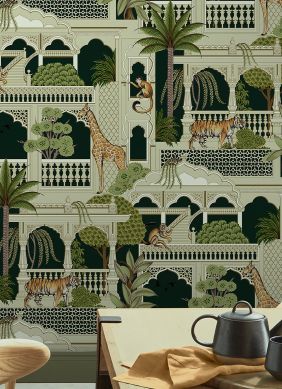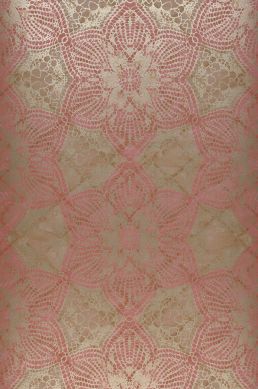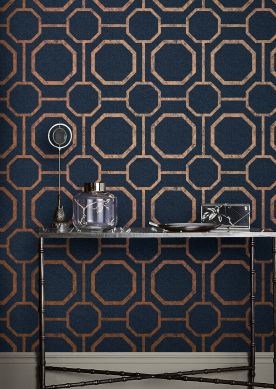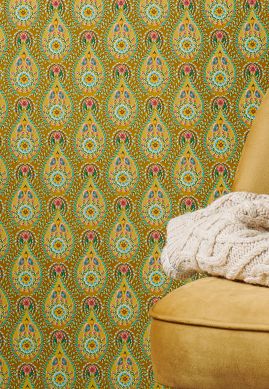Indian Wallpaper
Indian Wallpaper: The Guide
As the British East India Company took a stronger foothold on the Indian subcontinent in the 17th century, more and more trade routes opened up between Europe and the bustling ports of Bombay, Calcutta and Madras, resulting in an increased flow of a myriad of Indian textiles and decorative arts making their way to Europe. The so-called Chintz fabric, originally produced using the traditional block printing technique, soon became exceedingly popular. It featured bold patterns in vibrant colours, depicting Indian scenes and motifs such as elephants, paisley prints, and exotic flowers. European manufacturers soon began to produce their own versions, which became a common choice for upholstered furniture and for wallpaper designs. Today, Indian-style wallpapers continue to be a popular option for contemporary interior design solutions, combining traditional Indian elements with modern elements for looks that are familiar, yet undoubtedly exotic.
Table of Contents
- What are the unique features that define Indian-style wallpapers?
- Which motifs and patterns define Indian wall décor?
- Which looks can I create with an Indian-inspired wallpaper?
What are the unique features that define Indian-style wallpapers?
Powerful symbols of spirituality like the lotus flower, the mandala, or the Om syllable are all parts of the intricate, symmetrical motifs displayed on Indian wall décor in rich and saturated colours.
Strong spiritual symbology
In a land where religion and spirituality imbue every aspect of life, the use of sacred symbols on Indian-style wall décor is to be expected. The Devanagari syllable for Om representing oneness in Hinduism, familiar in the West through yoga, is a common emblem, and so is Ganesha, the revered Hindu god of wisdom with his elephant head. Other common symbols include the lotus flower and circular Mandala designs.
Symmetrical patterns and manual techniques
Reflecting a deeper philosophical meaning, many of the patterns used on Indian wallpapers tend to display intricate and complex designs. A great example are the Mandalas with their circular design and radial symmetry, meant to represent the universe. These motifs are often printed on textiles like shawls and sarees, as well as on wall décor, using centuries-old artisanal techniques like block printing, embroidery, and traditional weaving.
Exotic flora and fauna in vibrant colours
Stretching from the heights of the majestic Himalaya mountain range to the tropical rainforests of the south, the Indian subcontinent is home to an incredible variety of flora and fauna, which left a lasting impression on the first British explorers and traders. Highly stylised depictions of exotic wildlife, such as elephants, tigers, peacocks, and monkeys are very common on Indian wallpapers, along with colourful flowers like the lotus, the hibiscus, and marigolds.
Which motifs and patterns define Indian wall décor?
Drawing from a rich cultural heritage, Indian-style wallpaper frequently uses highly stylised Mandala, Paisley, or lotus flower patterns as well as motifs from its fascinating wildlife, for instance elephants.
Mandalas
One of the most instantly recognisable elements of Indian symbology, the Mandala (Sanskrit for “circle”) is both a visual representation of the universe and a guide for meditation practices. In its most elemental form, a mandala is a circle contained within a square and arranged into sections organised around a single, central point. On Indian wallpaper, Mandalas often feature intricate geometric elements as well as organic shapes like flowers and leaves or even animals and deities.
Paisley patterns
A teardrop-shaped motif with a curved, abstract design resembling a stylised floral display, the paisley pattern, called “kolka” or “buta”, originated in Persia but became very popular in India in the 16th and 17th centuries, during the Mughal Empire. Used on Indian wallpapers as well as on a variety of textiles and objects, it has continued to evolve over time with modern interpretations building on the classic design with bolder hues and innovative variations.
Elephant prints
Considered sacred animals, elephants have been revered in Indian society for thousands of years and still hold significant importance both in terms of culture and in design. Found in every Indian household either in the shape of figurines or other decorative objects, elephants are often depicted with ornate floral headdresses. In more recent times, they have also been represented in a more abstract or stylised form, with bold lines emphasising both strength and grace of these majestic creatures.
Lotus flowers
The lotus flower is sacred in Jainism, Hinduism, and Buddhism and represent spiritual enlightenment, purity, prosperity, and eternity. A common Hindu belief says that there's a lotus flower in every person’s heart, and that only when the lotus blooms, the person achieves enlightenment. On Indian wallpaper, the lotus flower is depicted either in an intricate form with detailed petals and bold colours, or as a highly stylised, almost geometrical shape.
Which looks can I create with an Indian-inspired wallpaper?
Indian wall décor can be used to great effect in a variety of ways, from classical, colonial inspired living room or studies to a contemporary take on ethnic Boho Chic, or as the focal element of a minimalist space.
An ethnic space with echoes of the British Raj
Spanning over two centuries across an almost continental landmass, the British Raj exerted enormous influence in many spheres of life, including interior design. Indian-inspired wall décor can be the centrepiece of an ambience that evokes the luxurious and exotic feel of the British Raj era. Match it with dark wooden furniture and incorporate details such as brass or copper lanterns, vintage maps or globes, and antique trinkets and curios to reflect the spirit of the era.
Global fusion Boho Chic
A staple of alternative design since its heyday during the Flower Power revolution of the Sixties, an Indian-style wallpaper is an excellent starting point for creating a global fusion Boho Chic look, blending the rich hues and intricate patterns of Indian designs with other global elements. Layering in textiles from other cultures, using fabrics such as ikat, kilim and batik, and matching patterns in a variety of scales results in an eclectic Boho Chic look with a global twist.
Modern oriental minimalism
Indian wallpapers do not need to be confined to exotic interior design concepts as they also work well in modern minimalist spaces, simply by incorporating their bold motifs and tonalities in a sleek and streamlined way. A traditional Indian wall décor featuring a large-scale, graphic pattern in a monochromatic colour scheme can be paired with furniture made from natural materials, with clean lines and minimal embellishment, allowing the motif to be the focal point of the room.








